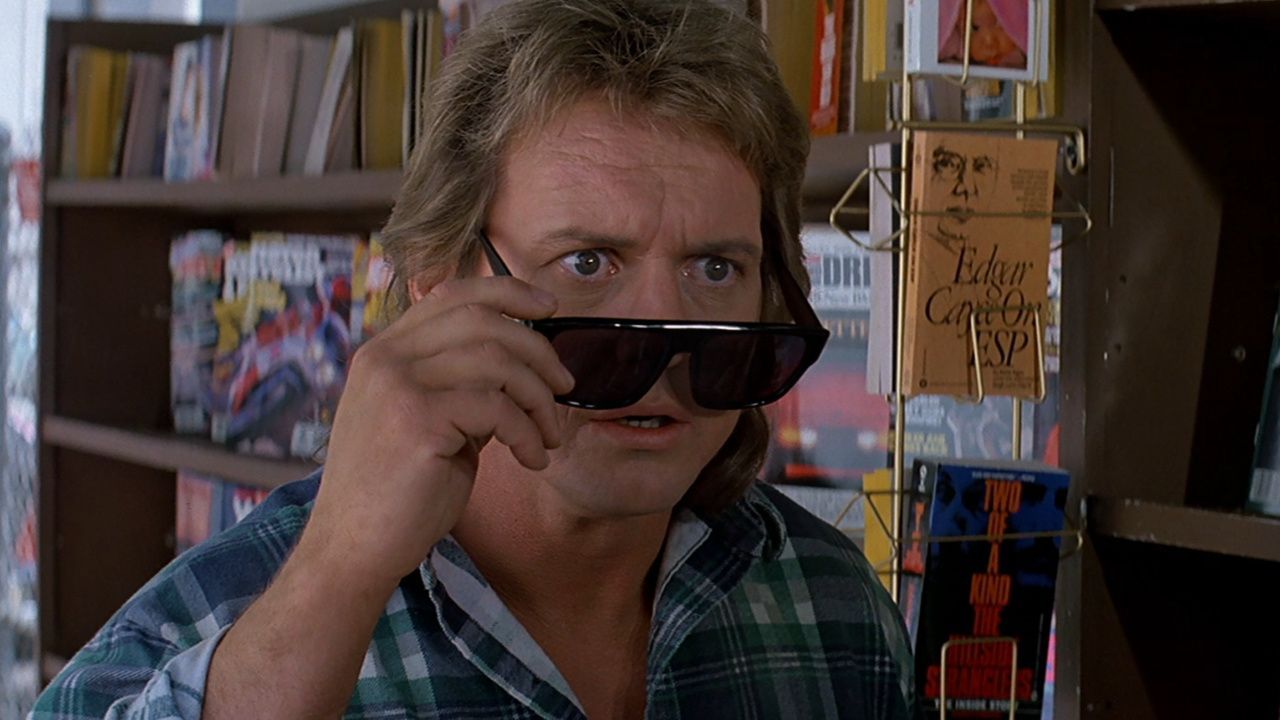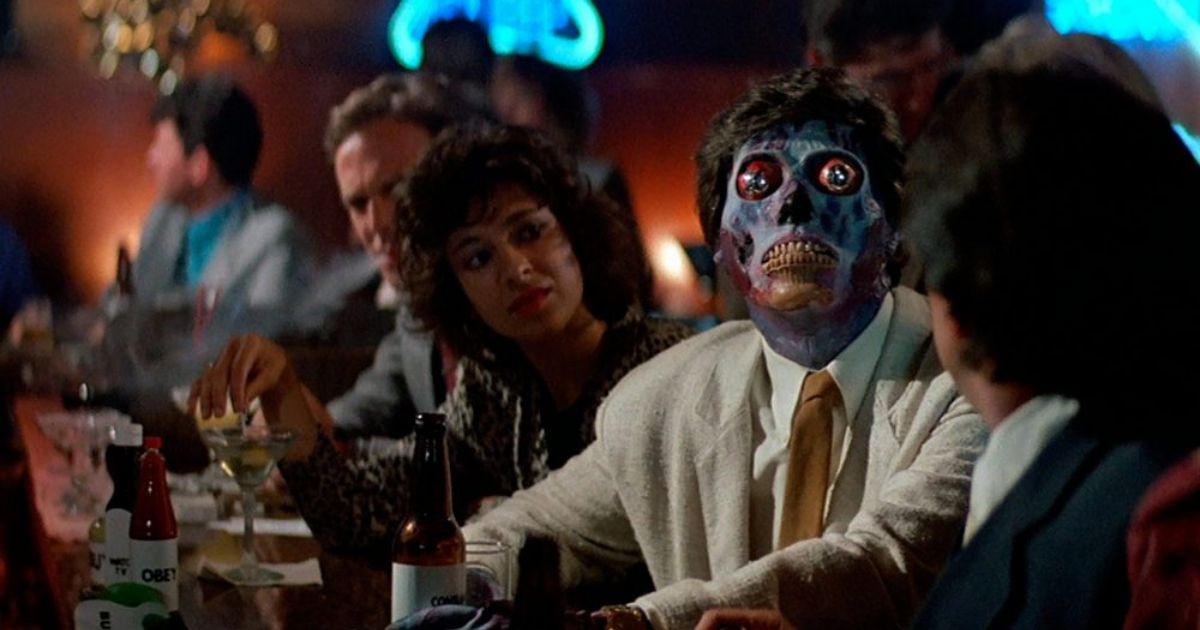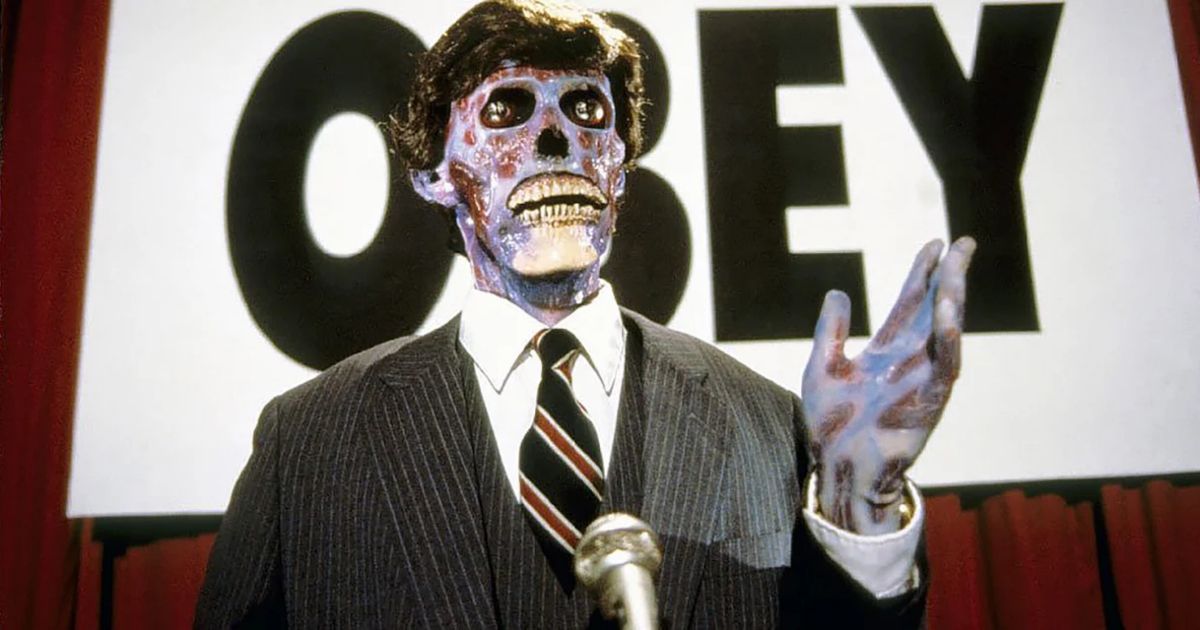#How the John Carpenter Movie Deconstructs Ideology

Table of Contents
“How the John Carpenter Movie Deconstructs Ideology”
What exactly did order look like in the late 20th century? An era characterized by its conspiracy, individualism, and free-thinking, the late 1980s proved to be one in which conventional ideology had more or less fallen to the wayside. A post “free-love” world that valued authenticity almost to a fault, this burgeoning moment in Western culture placed importance on the individual several notches higher than the wellbeing of the greater body. Where, then, would institutions play a role in still making sure some sort of control was had over the people they feel so desperately needed order? Well, in the eyes of John Carpenter (behind sunglasses veiled in skepticism), this obligation falls into the hands of the representatives of “comfort” in the modern world: Capitalism.
John Carpenter Sees the World Different in They Live
John Carpenter’s They Live premiered in theaters in 1988 to an audience maybe too premature to realize its relevance. The film follows George Nada (a surname which literally means ‘nothing,’ played by wrestler Roddy Piper), a homeless drifter who has found his way to Los Angeles, where he befriends a group of wanderers and acquires a pair of sunglasses that help clear vision far more than simply blocking out excess UV rays. When Nada puts on the glasses, he soon comes to the realization that the free world he was promised is only a mirage of freedom that reveals itself to be oppression when further approached.
Not only do the glasses replace color with a muted landscape, it also adds not-so-subliminal messaging to signs, billboards, and other advertisements that encourage consumerism. Even his fellow man turns into something morbid and unrecognizable under these lenses, replaced by aliens with horrifying humanoid features. It is revealed that these creatures have placed humanity in a trance-like state, unable to break free from the shackles unknowingly placed on them by these extraterrestrial visitors. That is, until the rules of an 80s action movie are put into place.
For Carpenter and his protagonist, these glasses reveal ideology as a facade in front of the true nature of societal structure. We spend the first 20 minutes of They Live in quasi-ignorant bliss that’s draped by an unexplained tension before Nada puts on the glasses, laying the groundwork for a film ultimately rooted in dissatisfaction and that “off” feeling it pushes throughout. Once finally donning the fated glasses, that tension is explained to Nada but proves to be difficult to get into the heads of others.
As the film progresses and those in control start to realize that one of their subordinates is now aware of the grand scheme, Nada naturally becomes more desperate for his burden of realization to be shared, yet is met with increasing aversion. This presents the main problem of ideology that They Live is attacking: blind allegiance.
They Live’s Guide to Ideology
In a lot of instances, ideology is something taken so seriously by those participating that speaking out against the supposed natural order can lead to immense persecution. In the American instance, this can still ring true despite the supposed encouragement of free speech. In the case of Nada, his belief system is compromised by newfound knowledge that those around him refuse to even recognize or listen to. In a sense, this allegory bled into real life, not only through commentary but the reception this film had upon its release.
Many critics spoke about the film in a negative light, saying its cultural criticism was muddled in poor acting and lackluster writing. Much like Piper’s Nada, director John Carpenter too was discarded as nonsensical in his own regard. Reminiscent of the blind allegiance to ideology and the lack of recognition its criticism and analysis receives until time has passed, Carpenter’s allegorical horror movie only saw its true comeuppance in the zeitgeist many years later, either as an ’80s cult classic or as a philosophical and political masterpiece (something explored by the Slovenian philosopher Slavoj Zizek in his film The Pervert’s Guide to Ideology).
Of course, that delayed reception is fitting for They Live; being ostracized due to disagreement welcomes in the second punch Carpenter takes at ideology, at least in the modern Western sense: individualism under capitalism.
They Live Shoots Down the Illusions of Capitalism and Reaganomics
As previously stated, the release of this film coincided with the height of the individualistic mindset in 20th century America. The hippie movement was a counter-culture that praised genuine personal expression to the detriment of community, and the post-hippie ’80s exacerbated this with dangerously unchecked capitalism and the kind of “Greed is Good” motto of Gordon Gekko in the film Wall Street, leaving any positive ideals about community and selfless utilitarianism to erode into irrelevance.
On top of that, They Live was released in 1988, nearing the end of a Reagan administration that had greater America in a choke hold. This would transfer to his Vice President, who’d continue a White House campaign that placed a gross amount of importance on monetary value, and granted freedoms to corporations unseen up until this point. In Carpenter’s eyes, these corporations use ideology to invade their consumers’ brain under the guise of individual expression, the reflection of this being our initial exposure to this fractured reality.
When Nada first dons the glasses in a busy Los Angeles, his surroundings change into a muted and oppressive version of its former self. People appear almost demonic, as he now sees the hosts occupying humankind; advertisements change from lighthearted encouragements to demands of submission. A beautiful illusion, painted to distract the masses from the wrongdoings of those more powerful, as they milk the Earth of all its resources in the name of profit and personal gain.
The Violent Cycle of Ideology in They Live
Carpenter’s campy sci-fi thriller manages to say a lot in its short 94 minutes. While not the most eloquent demonstration, it perfectly encapsulates disdain in the face of change that will not be accepted due to ideological beliefs. Even in the underbelly of resistance, progress is seldom seen due to a lack of patience, resorting to even more ostracization by the majority.
Thus, the cycle of ideology’s dominance of the individual continues, while ultimately being the community’s demise. As uncomfortable as deconstructing ideology may be, Carpenter sees it as a necessity in order to achieve true sanctity among the masses. As long as ideology exists, there will always be those who take advantage of its believers.
If you liked the article, do not forget to share it with your friends. Follow us on Google News too, click on the star and choose us from your favorites.
For forums sites go to Forum.BuradaBiliyorum.Com
If you want to read more Like this articles, you can visit our Social Media category.









